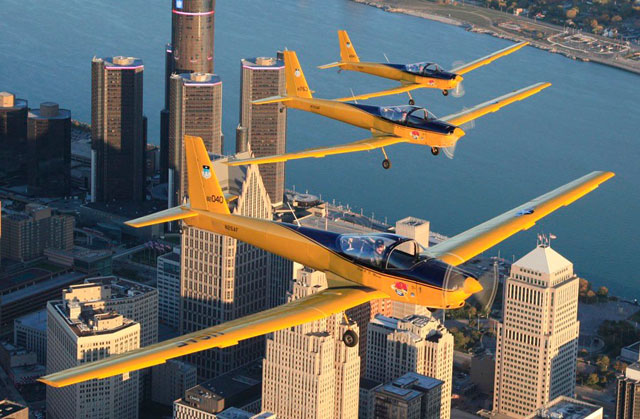 Image (c) 2012 Aaron Kiley ( [email protected]) and J. Sullivan ( www.skypics.com). Used with permission.
Image (c) 2012 Aaron Kiley ( [email protected]) and J. Sullivan ( www.skypics.com). Used with permission.
The Detroit Tuskegee Airmen Glider Club, which operates under the auspices of the Tuskegee Airmen National Historical Museum, flies three Schweizer SGM 2-37 motorgliders donated by the U.S. Air Force Academy in 2003.
“The ‘club’ moniker grew up around the collection of pilots that coalesced around the museum’s program,” said Steve Tupper, a club member and producer of the Airspeed Podcast. “The club is a program of the Tuskegee Airmen National Historical Museum. It does not have a separate existence from the museum.” The museum is itself a 501(c)(3) nonprofit, he added.
The club’s 20 members use the SGM 2-37s for events including giving rides to Young Eagles and youths in Detroit. They also teach the museum’s scholarship students to fly, participate in demonstrations at airshows and other events to raise awareness of the museum’s missions, and train aircrew to perform the other missions, said Tupper.
In the past, the club has charged a one-time initiation fee, then $200 a year for annual dues, said Tupper. “Members pay $35 per Tach hour try to fly the SGM 2-37. The Tach is indexed to 2600 RPM and the aircraft cruises between 2200 and 2350, so a Tach hour is a long time,” he said. “The aircraft burns between five and six gallons per hour if properly leaned. This, in case there’s any doubt, means some pretty inexpensive flying.”
Through the museum, the club gives initial instruction to scholarship students from Detroit, said Tupper. “Usually, two scholarship students are training at any given time. The museum selects the scholarship students, and the club instructors train them,” he said. “The scholarship students are usually 15-18 years old.”
Tupper advised those wanting to form or grow a club to think about core values and what you want to do as pilots. “Hangar flying and $100 hamburgers are all well and good, but a club can catch fire and become amazing if [it] identifies and pursues a mission,” he said. “Have you ever said to a friend, ‘I’d love to stay and chat, but I have to leave now to go to airshow team practice? Airshow team practice? Really? Mere mortals do that? Yes they do.’
“Have you ever walked shoulder-to-shoulder with your buddies into an airport terminal full of inner-city kids, knowing that nobody’s going home until every one of those kids has had time at the controls of an Air Force Academy trainer? Yeah, we do that,” said Tupper. “Have you ever been part of a three-ship formation of beautiful yellow long-winged aircraft slicing through a cobalt-blue sky on the way home from thrilling 20,000 people in an airshow crowd? Two miles above anyone who wouldn’t understand the thoughts that you’re thinking?”
Having a mission makes a club a team, said Tupper. “It has made all of the difference for us and it has irrevocably changed my flying.”


